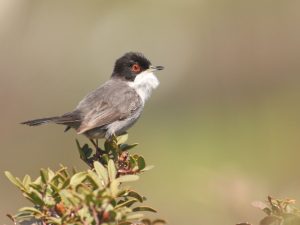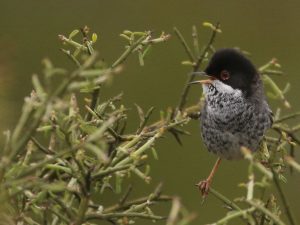
relaxed spring birding and natural history
Late March and early April is a great time to visit Cyprus: while things are still chilly and quiet back home, bird migration is well underway here, while the Cypriot countryside is ablaze with wild flowers, including numerous orchids.
Download leaflet
Wildlife Travel leaflet Cyprus birding 2026
Dates
26th March – 2nd April 2026
fully booked
Leader
Price
£1,895
Single Room Supplement – £145
Included
Return flight London Gatwick to Cyprus. Local transport as specified in itinerary. Seven nights accommodation, full board.
Not included
Refreshments. Entrance fees to archaeological sites (c€20 in total). Gratuities. Travel insurance. ETIAS/visa costs. Covid tests and associated costs.
Group size
Minimum 4, maximum 12.
Our base is a delightful family-run hotel on the coast on the Akamas Peninsula, not far from Polis, looking out over Chrysochou Bay. From here, we will explore the surrounding hillsides, fields and meadows in search of birds, wild flowers and early butterflies. Spring migrants should be passing through in good numbers and variety at this time of year. Various warblers, wheatears and buntings could all be seen during the week, along with local specialities including the island’s three endemics: Cyprus Warbler, Cyprus Wheatear and Cyprus Scops Owl. We will also look for the island’s butterflies, amphibians and reptiles, with several species found only here including the Paphos Blue, Cypriot Water Frog and Troodos Wall Lizard.
We will also venture further afield, visiting various well-known migration hotspots, including the wetlands at Agia Varvara, the coastal fields around Mandria, the salt lake and gravel pits on the Akrotiri peninsula, the scrubby woodlands of Pegeia and the Baths of Aphrodite, and Paphos headland, well known both for its birdlife and for its archaeology.
Our itinerary gives us the opportunity for a relaxed exploration of the island’s wildlife, while also having the flexibility to make sure we connect with some of the more exciting migrant sightings that may well turn up during the week.
We first visited Cyprus way back in 1991, and we are looking forward to returning to Aphrodite’s island.
Download trip report
Please note that holidays change, although sometimes only slightly, from year to year and previous trip reports may not reflect the planned itinerary, or other holiday details, for the current trip. Please ask us if you would like to know of any significant differences.
Day 1 Our flight takes us to Paphos, from where we transfer to our hotel. After settling in, there will be time to relax at the hotel or take a local walk in the afternoon.
Day 2 We walk along the coast from the botanic garden at the Baths of Aphrodite towards Fontana Amorosa. The scenery is breath-taking, with high cliffs dropping steeply down to the sea. Paphos Blue should be amongst the early spring butterflies, and there should be newly-arrived migrant birds flitting amongst the bushes, including warblers, wheatears, chats and flycatchers.
Day 3 We head to the Paphos World Heritage Site, splitting our time between the Tombs of the Kings and the Paphos Peninsula, with its famous ‘houses’ of Roman mosaics. Aside from the interesting archaeology, this area is known as a migrant hot spot, and after soaking up the history we will check to see what birds we can track down: almost anything is possible at this time of year, with Cretzschmar’s Bunting, Eastern Black-eared Wheatear and Rüppell’s Warbler regularly found on the Peninsula. Mixed flocks of ‘flava’ wagtails should include various forms amongst the expected Black-headed Wagtails, along with Red-throated Pipit. The shoreline beyond the archaelogical site is a regular wintering site for Greater Sand-plover, with a chance of a late bird still lingering here.
Day 4 We explore Pegeia Forest where, beneath the scattered canopy of Calabrian Pine and Phoenician Juniper, we should find an interesting variety of orchids (depending on the season) and other wild flowers. Afterwards, we will drop down to Cape Drepanum, a well known migrant trap, where we will check the shrubs for warblers, with larks and pipits to be looked for in the open areas.
Day 5 We head back to the Paphos area today, with birds very much on our mind. We visit the pools at Agia Varvara, where the permanent water attracts a variety of migrants: Little, Baillon’s and Spotted Crake may all turn up, along with the chance of various waders, herons, wagtails and pipits. The dry hills nearby are a wintering site for Finsch’s Wheatear, and we will keep our fingers cross for one still hanging on into late March. We also visit nearby Mandria beach, another famous migration hotspot, where we will be hoping to coincide with a good arrival: Bimaculated Lark, Caspian Plover, Pallid Harrier, Blue-cheeked Bee-eater and Caspian Stonechat are just some of the mouth-watering species that are regularly found here…
Day 6 An early start sees us headed out for our longest day, travelling east towards Limassol and the various birding sites around the Akrotiri peninsula. Our exact itinerary will depend to some extent on what birds have been reported recently, but our day is bound to include Greater Flamingo and a good various of waders and wildfowl.
Day 7 We drive up to the ridge in the heart of the Akamas. Amongst the pines we will look for wild flowers, including more orchids, while making sure we get to see both Cyprus Warbler and Cyprus Wheatear. After lunch in a local taverna, a leisurely walk downhill will take us back to the hotel.
Day 8 We have one last morning to check the bushy hillsides close to the hotel for migrants, before we must gather our things and bid fond farewell to Cyprus and head home.
Please note that the itinerary may be changed to suit the weather or other practicalities at the discretion of the leaders.
The Aphrodite Beach Hotel is a wonderfully welcoming family-run hotel, located on a beautiful coastline.
Meals, using fresh local produce, are taken in the lovely dining room overlooking the bay. Breakfasts can be taken on the terrace (weather allowing). Lunches will be mostly picnic packed lunches provided by the hotel. All meals are included in the holiday price.
Local travel will be by small coach.
Group flights
Group flights are with Easyjet from London Gatwick to Paphos.
26th March depart London Gatwick 07.15, arrive Paphos 13.45
2nd April depart Paphos 14.55 arrive London Gatwick 18.00
It is also possible to fly direct from Manchester, Edinburgh and Bristol. For those flying from other airports, we can arrange individual transfers to or from the hotel.
Overland travel
You can reach Cyprus by train and ferry from the UK, with travel likely to take four to five nights. Contact us to find out more, and to make your holiday flight-free.
Time zone
Cyprus is two hours ahead of UK time.
Entry requirements
If you hold a British passport you can travel to Cyprus for up to 90 days in any 180-day period without a visa. Your passport must be issued less than ten years before the date you enter the country and valid for at least three months after the day you plan to leave.
Starting in 2026 British passport holders will need to apply for the ETIAS European Travel Authorisation to visit Schengen countries (including Cyprus, which has started the process of joining the Schengen Zone). This must be applied for online prior to travel, at a cost of €7 (free for over 70s). Once granted, your ETIAS will be valid for three years.
In general we should expect warm, sunny weather, even hot down near the coast, although showers and cooler, windier conditions are possible.
On most days, we are walking for much of the day, albeit at a relatively slow pace. The longest walk (Day 7) will be just over 7km, mostly downhill. It is necessary to walk on rougher ground and up some (gentle) slopes, although none of the walking is strenuous. Good (light) walking boots are essential. All walks and excursions are optional.




